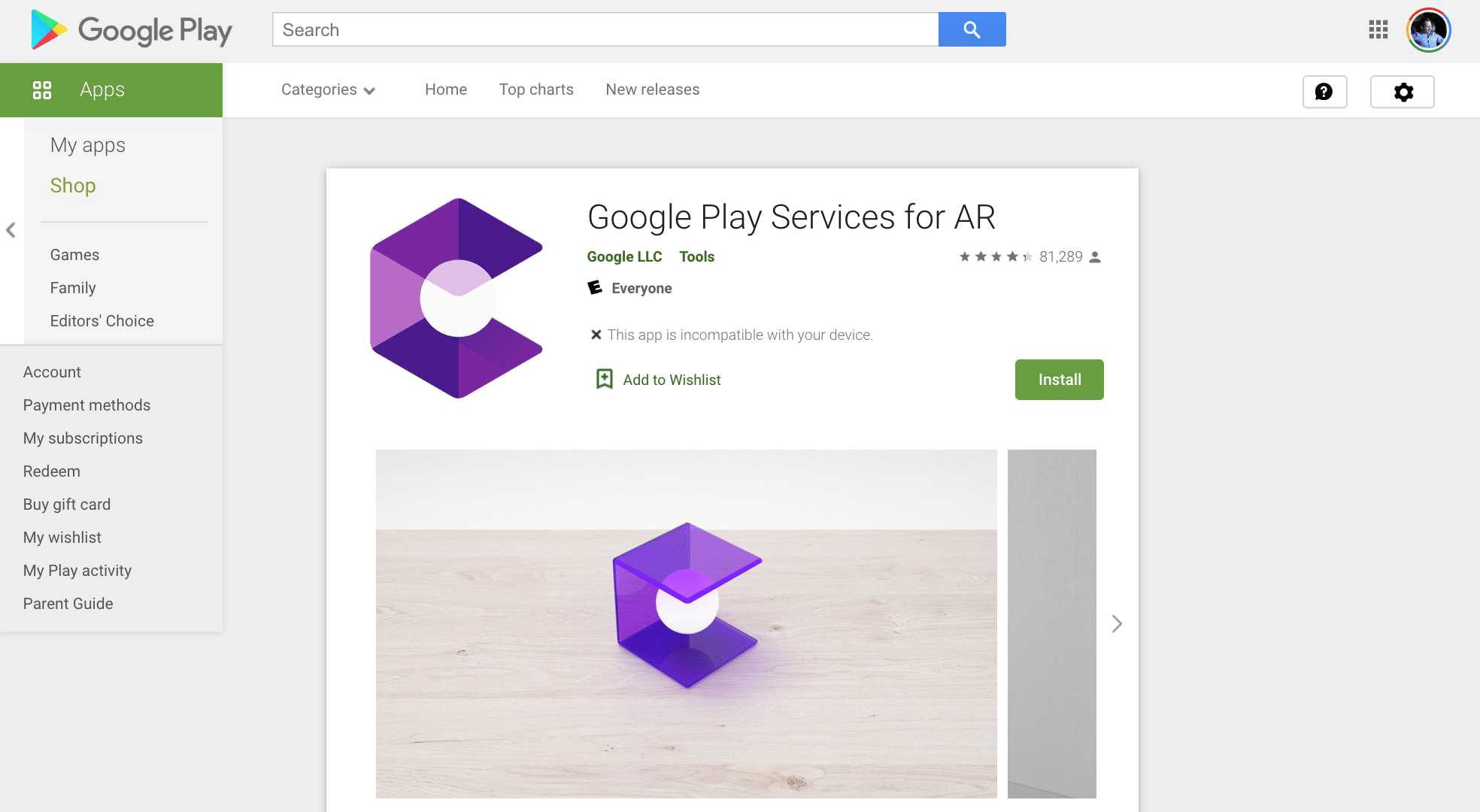
Data Point of the Week is AR Insider’s dive into the latest spatial computing figures. It includes data points, along with narrative insights and takeaways. For an indexed collection of data and reports, subscribe to ARtillery Pro.
While in perpetual market-sizing mode, our radar is up for clues of AR user penetration and traction. Having gone through the painstaking process of assembling the complex AR market-sizing puzzle, our ears perk up when the radar picks up subtle signals. It’s all about catching them.
The latest is from Sensor Tower — a reliable source for app usage data. In its monthly report of global app downloads, a gem popped out. Google Play Services for AR app is the 8th most downloaded Google Play app in August (9th overall), sitting between Instagram and Snapchat.
What does this mean? Google Play Services for AR, previously known as ARCore, is the user-facing version of ARCore. In order to activate AR apps on an Android device, you first need this app. The re-brand is only for the user-facing app, while the ARCore SDK branding remains.

So the app download volume suggests real traction for AR apps on Android. Assuming every download was paired with the subsequent download of at least one AR app (given the inferred intent of downloading Google Play Services for AR), it means AR apps themselves are scaling.
As for how much they’re scaling? It’s again somewhere between Instagram and Snapchat. No single ARCore app made this top ten list, but these results essentially say that the collective lot of AR app downloads on Android is equal to or greater than these Play Services for AR downloads.
To pinpoint total AR app downloads, we could extrapolate Play Services for AR app downloads by getting Instagram and Snapchat’s monthly Android totals (it’s between those points). That figure is then multiplied by the estimated AR apps subsequently downloaded per Play Services for AR app.

That’s the formula… now it’s about getting the inputs (Instagram, etc..). We’ll be doing just that, and the outcome will be an educated guess on AR app download volume on Android. From there, we can back into iOS by applying a usage multiplier and adjusting based on several factors.
This exercise is a glimpse into our thinking when market sizing. Unfortunately, it’s still an extrapolation with several variables (doesn’t include China). So it’s not canonical: This type of exercise is paired with several others to continually gut-check and gain confidence levels.
In the meantime, failing a download number, Sensor Tower rankings at least tell us at a high level that AR apps on Android are gaining meaningful traction. Also note the number of reviews for the App on Google Play is 81,000+ — not directly reflective of downloads but valuable for perspective.
We’ll report back after further calculations. Meanwhile, see the market-sizing methodology for our research arm ARtillery Intelligence here, and the latest AR forecast here.
For deeper XR data and intelligence, join ARtillery PRO and subscribe to the free AR Insider Weekly newsletter.
Disclosure: AR Insider has no financial stake in the companies mentioned in this post, nor received payment for its production. Disclosure and ethics policy can be seen here.
